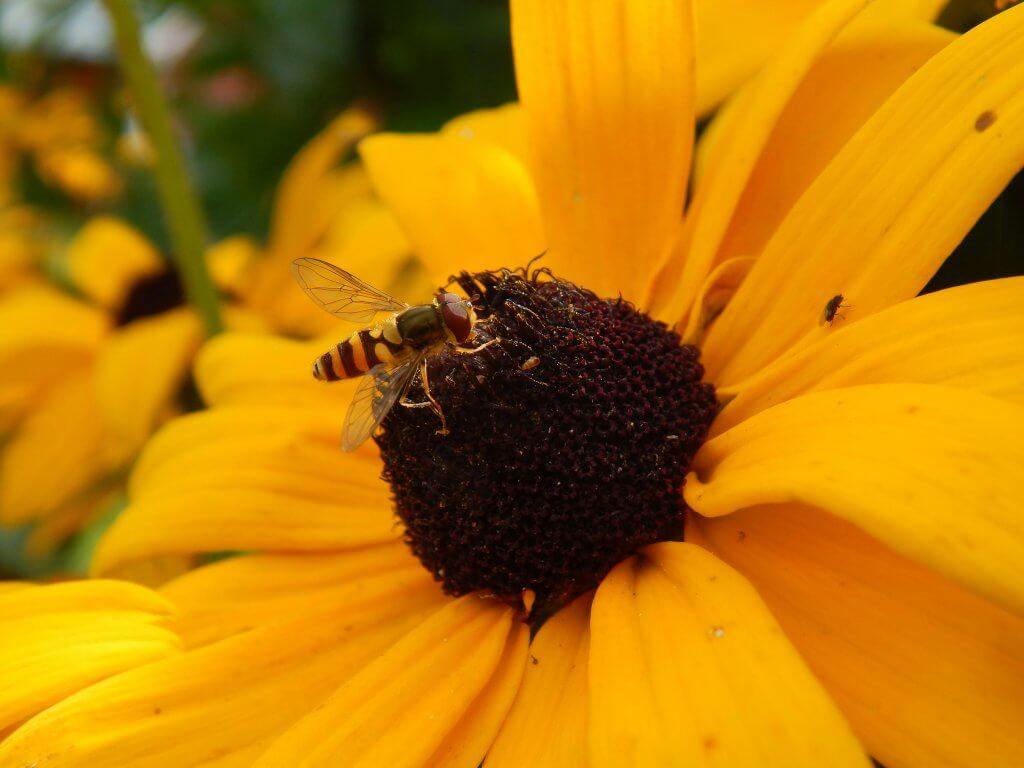5 Full-Sun Plants to Attract Pollinators to Your Garden
North Carolina’s four seasons provide gardeners and plant enthusiasts with ample opportunities to create a great garden that thrives year-round. If you’re looking to start or enhance a pollinator garden for next year, fall and late winter is the perfect time to spread seeds to allow them enough time to germinate for the spring.
What Are Pollinators?
Pollinators are insects or animals that help plants proliferate by carrying pollen and transporting them elsewhere where the cycle can start anew. These creatures play a critical role in plant reproduction and the production of fruits, seeds and other crops. Common pollinators include butterflies, hummingbirds, bees and birds. They are naturally drawn to certain kinds of plants, so you’ll likely have a busy garden once your garden is established.
What Is a Pollinator Garden and Why Should You Have One?
A pollinator garden is an outdoor area designed to support local pollinators by providing diverse sources of nectar and pollen. Whether you have a large, expansive garden or a compact patio setup, pollinator gardens play a crucial role in supporting the health and diversity of local ecosystems by attracting and nourishing essential pollinators, which helps with plant reproduction and contributes to a thriving garden environment. Make your garden a beautiful, pollinator-friendly haven with the following plants:
1. Asclepias (Milkweed, Butterfly Weed)

What is Asclepias?
Asclepias, commonly known as milkweed, is a perennial plant renowned for its unique flowers and vital role in supporting pollinators. Butterfly weed is another common variety of milkweed that many people are familiar with. Milkweed comes in a wide range of colors, with various species suited to different growing conditions. Asclepias have distinctive pods that release seeds surrounded by white, silk-like hairs that are then dispersed by the wind.
Why Add Asclepias to Your Garden?
Milkweed (Asclepias) plays a crucial role in the life cycle of monarch butterflies. Monarchs lay their eggs exclusively on milkweed plants because caterpillars only feed on their leaves, relying on the milky sap within for nourishment. Simply put, without milkweed, monarch butterflies cannot survive. Asclepias flowers also provide nectar for other pollinators when it’s in bloom. Beyond its role in the environment, asclepias are also a favorite in decorative gardens because the plant thrives in full sun, is resistant to deer, is drought-tolerant and native to many regions in North Carolina.
2. Agastache (Hummingbird Mint)

What Is Agastache?
Agastache, often called hummingbird mint or hyssop, is a perennial genus of aromatic plants known for their colorful, tubular flowers. Hummingbirds and butterflies alike flock to agastache for its sweet nectar. When touched or crushed, it releases a pleasant minty fragrance, which makes them unattractive to deer and rabbits.
Why Add Agastache to Your Garden?
Agastache attracts butterflies, bees and hummingbirds, making it a valuable addition to any garden. You’ll likely get plenty of little flying visitors if you plant patches of it in your garden. Plus, its scented foliage makes for a perfect addition to herb gardens and mixed borders planted in well-draining soil. It thrives in full sun, tolerates drought and extreme heat and is resistant to deer.
3. Echinacea (Coneflower)

What Is Echinacea?
Echinacea, commonly known as coneflower, is a genus of flowering plants admired for its brightly colorful, daisy-like blooms and prominent, spiky centers. You may also have heard of echinacea being used in herbal supplements for its purported positive health effects.
Why Add Echinacea to Your Garden?
Echinacea is attractive to butterflies and hummingbirds. It is very drought-tolerant, thrives in full sun and NC’s summer heat. Coneflower is native to North Carolina and is deer-resistant, making it an ideal addition to mixed borders, wildflower beds, cut flower gardens and herb gardens.
4. Lantana

What Is Lantana?
Lantana is a genus of vibrant, heat-tolerant plants known for their clusters of colorful flowers and lush foliage. They grow as small shrubs in garden beds but can also grow in containers.
Why Add Lantana to Your Garden?
Lantana is a favorite for butterflies and hummingbirds. It offers continuous color through its blooms from summer through fall, thrives in full sun, is drought-tolerant and resistant to deer which makes it ideal for any garden. In the winter, you can even take them inside for a nice pop of color as a decorative house plant.
5. Rudbeckia (Black-Eyed Susan)

What Is Rudbeckia?
Rudbeckia, commonly known as Black-Eyed Susan, is a genus of hardy, flowering plants characterized by their bright yellow petals and dark brown centers. These robust plants are valued for their cheerful blooms and ability to attract pollinators.
Why Add Rudbeckia to Your Garden?
Rudbeckia attracts hummingbirds, provides nectar for butterflies and seeds for birds in the winter. This low-maintenance perennial works well in borders, wildflower gardens, containers and is a cut flower favorite. A customer favorite, the Black-Eyed Susan thrives in full sun, and is long-blooming and heat tolerant.
Get Your Favorite NC Pollinator Plants at Fairview Garden Center
Creating a pollinator-friendly garden filled with full-sun plants not only adds color and life to your landscape, but also supports your neighborhood’s essential pollinators that have a part in making your ecosystem thrive.
Whether you’re just starting your pollinator garden or looking to enhance the one you have, come visit us at Fairview Garden Center for expert advice and a wide selection of the best pollinator plants.




